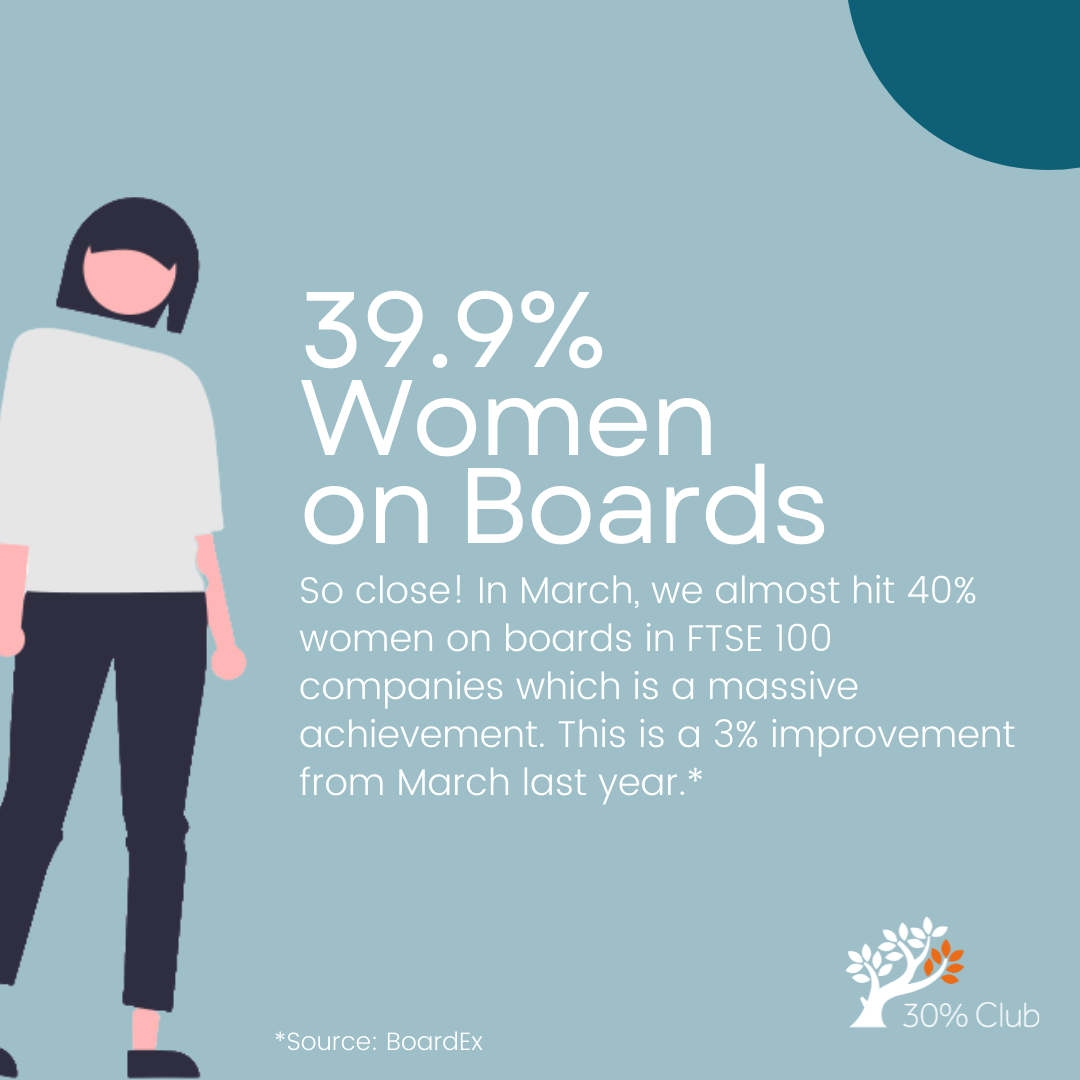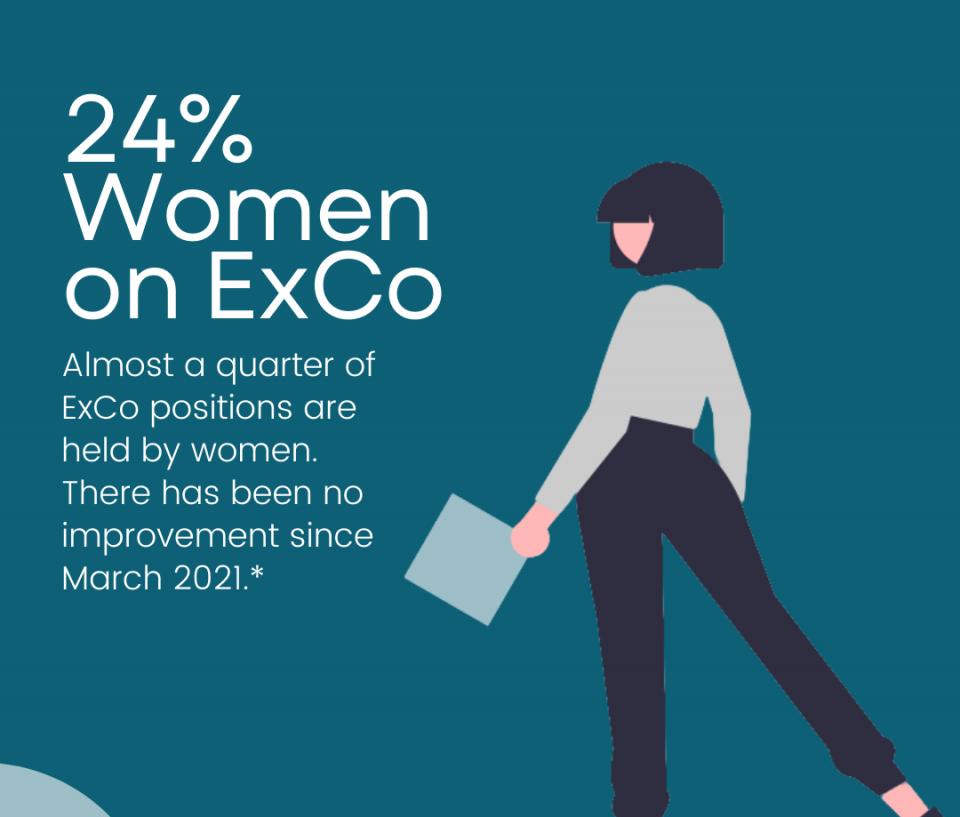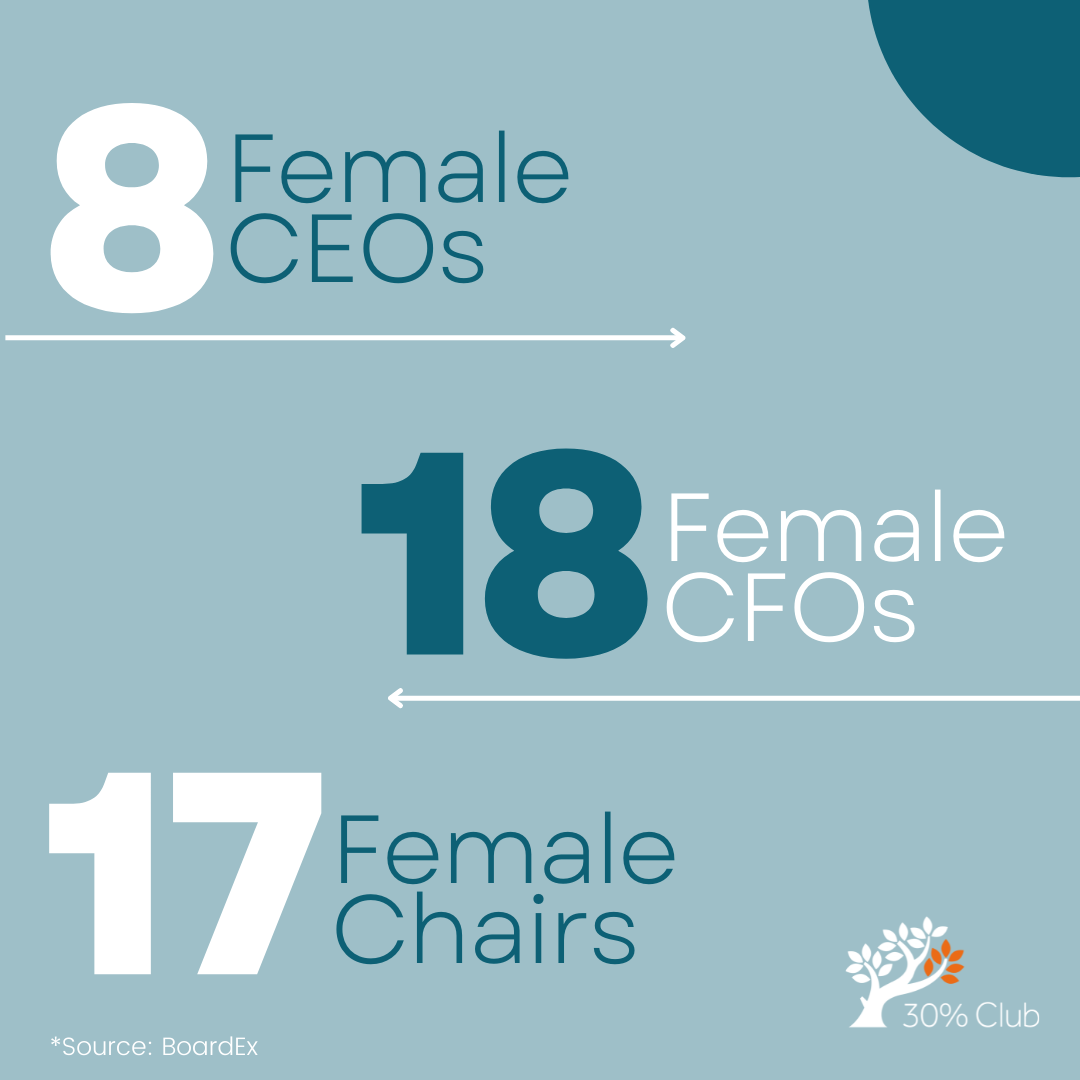
The UK’s biggest 100 companies are on the brink of hitting 40% female representation at board level.
Our latest stats reveal the FTSE 100 average is 39.9%, as of March 2022.
The FTSE 100 hit the 30% critical mass in September 2019, meaning there has been rapid and significant progress in the past two years.
That’s precisely why our campaign is working with companies all over the world to strive for the 30% mark.
Of course, the real goal is goal is PARITY.
Our minimum UK objectives by 2023 are:
- Beyond 30% representation of women on all FTSE 350 boards, to include one person of colour We support the Parker Review goals for at least one person of colour on every FTSE 350 board.
- Beyond 30% representation of women on all FTSE 350 Executive Committees, to include one person of colour.
- Beyond 30% of all new FTSE 350 Chair appointments to go to women between 2020 and 2023.
March 2022 saw women’s representation on FTSE 100 boards reach an average of 40% for the first time in history.
While we celebrate this milestone, there is still much work to do across FTSE 250 and 350, not least of which on ethnic representation – only 178 board positions is in the FTSE 350 are held by directors of colour, with just 77 of those positions held by female directors of colour (Parker Review, November 2020).
Furthermore, there are still 38 FTSE 350 companies at less than 30% women on boards. But as of March 2022, there is at only one FTSE 350 company with an all-male board and the number of all-male ExCos is falling.


With just 24% of FTSE 100 Executive Committee roles currently (as of 1 April 2022) held by women, achieving at least 30% by 2023 represents a significant but achievable challenge.
Driving progress will require ongoing investment from CEOs and leadership teams in developing the pipeline of female directors. It will also require demand by investors, leadership from board chairs, commitment by nominations committees and action from head hunters, and of course it also requires ongoing investment from CEOs and leadership teams in developing the pipeline of female directors.
Out of 100 companies, the UK still only has 8 female CEOs, 18 female CFOs and 17 female Chairs. This shows that the 30% Club still has work to do even though they have reached our 30% on Boards target.
We encourage individuals and organisations to support our work and help us in our quest to increase the number of women on company boards and at senior management level.
What you can do to help us:
Become a Chair or CEO Member (please check UK webpage for criteria)
Call upon your own organisation to introduce targets for women in leadership
Share information on the 30% Club with your colleagues and networks
Encourage lagging companies to improve their diversity efforts


